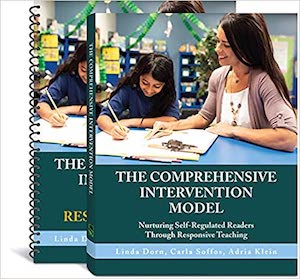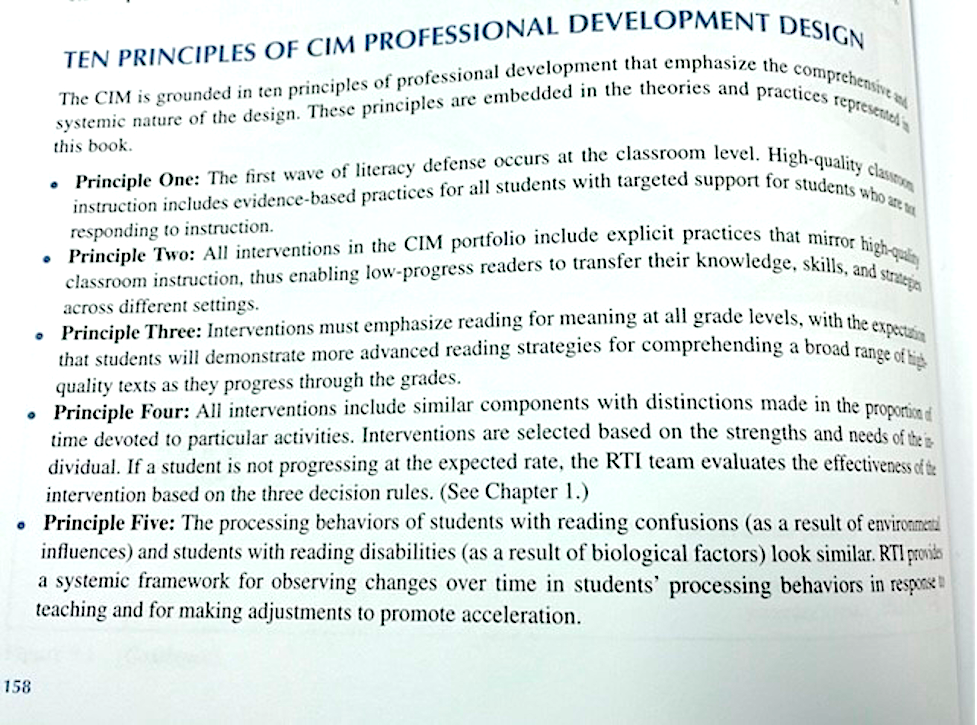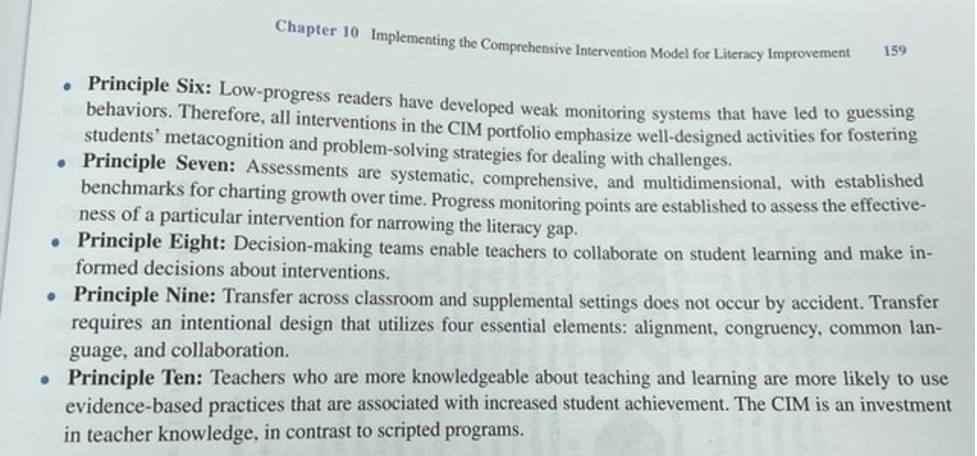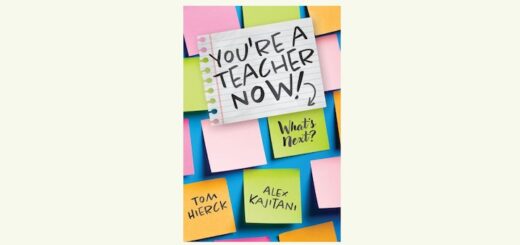Implementing CIM to Nurture Every Reader
The Comprehensive Intervention Model: Nurturing Self-Regulated Readers Through Responsive Teaching
By Linda Dorn, Carla Soffos and Adria Klein
(Stenhouse, 2021 – Learn more)
Reviewed by Beth Hassinger
![]() It’s late summer of 2013 and a new school year is on the horizon.
It’s late summer of 2013 and a new school year is on the horizon.
While frantically looking for a teaching position for the year, I score an interview with the school where I now work. They begin explaining that their intervention framework is based on the work of Dorn and Saffos and ask what my experience with the Comprehensive Intervention Model (CIM) is.
I answer honestly that I have not yet heard of it and try my best to tailor my experience to their needs. When I get home from that interview, the first thing I do is begin my research about this framework.

As a part of that training nearly a decade ago, I received the book Interventions That Work: A Comprehensive Intervention Model for Preventing Reading Failure in Grades K-3.
This is where I first learned that the Comprehensive Intervention Model “provides a theoretical framework for aligning instructional support for low-progress readers across classroom and supplemental settings, while intentionally teaching for the transfer of knowledge and strategies for different purposes and on different tasks.”
At our monthly reading specialist meetings, my learning continued and by my second year as a reading specialist, I started hearing about a new book by Dorn and Saffos. Most of the conversations focused on how the new book would be able to better help us in our implementation of Comprehension Focus Groups (CFGs).
Fast forward to the present
Some years later, my anticipation for reading this book came full circle at another training session. We were learning about the implementation of the language phase when we heard the book would soon to be published. Unfortunately, it also came with the sad news about the passing of Linda Dorn.
While bittersweet, the wait for this book has been worth it! Tearing off the cellophane, I went first to the Resource Manual that accompanies The Comprehensive Intervention Model: Nurturing Self-Regulated Readers Through Responsive Teaching (Stenhouse, 2021) What a treasure trove of materials. Each resource is referenced within the book. Even before a deeper read, I found so many tools that could be implemented immediately.
The resource manual offers a continuum of behaviors that change over time, assessments for diagnostic use and/or progress monitoring, checklists for reading and writing behaviors, lesson plan forms, and so much more. (See a complete list here.)
As I perused the table of contents of the book itself, my excitement continued to grow. Chapter 4: “Teaching for Alignment, Congruency, and Transfer” has been a significant focus in my building and district this year so I couldn’t wait to see what new insights were offered.
Beginning with the Ending
In the introduction the authors advise readers to start at Chapter 10: “Implementing the Comprehensive Intervention Model for Literacy Improvement.” While I have familiarity with the CIM framework and considered starting at Chapter 1, I wanted the experience the authors advised. It was a good decision.
Chapter 10 begins with the 10 Principles of CIM Professional Development Design.
After outlining the principles, the authors provide case studies from five school districts across the country outlining parts of their implementation and their results.
In Spokane Public Schools, Washington, one notable result of implementing this framework was: “For the first time in the history of the district, 205 LD students were discontinued from special education services because they had reached grade-level standards of literacy.”
As a trained reading recovery teacher, I am not surprised as CIM uses an assets based approach rather than a deficiency based approach. What is surprising is that you don’t often hear school districts being able to say that they can discontinue students from special education. This is something that every school district should be striving for.
Throughout the book, there is a consistent message that reading interventionists are studying right alongside classroom teachers to create a sense of responsibility for all students through collaboration and reflection. For this model to work, you need to be willing to invest in teachers’ understanding of literacy instruction.
There and Back Again
After looping through Chapter 10, I returned to the beginning, Chapters 1-4 provide theory, outline the interventions that are a part of the framework, and discuss the role of assessment both in determining needs and informing instruction. Chapter 4 is entirely devoted to curriculum alignment and teaching to transfer students out of intervention and back into the classroom.
Despite the fact that my current district is moving away from the use of the CIM interventions, I was reminded this framework is intertwined so much within our professional development practices. It is my hope that we will continue to follow the framework and one day we will return to the use of the interventions.
Chapters 5-9 go in depth on each intervention. For the youngest of readers just beginning their literacy journey, chapter 5 is about the assisted writing intervention. You will read about the literacy theory that supports each of the phases that students progress through during each lesson.
Chapter 6 discusses the intervention Guided Reading Plus. If you have taught guided reading, you will find a lot of similarities to what you do in a guided reading group. Chapter 7 focuses on phonemic awareness and phonics instruction. While reading the book, I found many details that matched with my developing understanding of the science of reading.
Specifically, there were many things here that I have learned about in the book Shifting the Balance by Burkins and Yates (Stenhouse, 2021) and also in Nell Duke’s article for ILA, “The Science of Reading Progresses: Communicating Advances Beyond the Simple View of Reading” (May 7, 2021).
Chapter 8 provides an in-depth look at Comprehension Focus Groups (CFG). While this lesson format has existed for years, this is the first time it is available in a book. Chapter 9 was entirely new to me. It focuses on the intervention known as Strategic Processing Intervention (SPI). This is an intervention for those students who are struggling the most. All these interventions rely on utilizing the language phase.
Worries and Wishes
As the reading wars continue to rage and the pendulum swings, I worry that this book won’t get the attention that it deserves because people will think that it’s just another balanced literacy book. It’s much more than that.
While some language in the book feels a bit dated, terms change rapidly and Dorn’s untimely passing in 2019, two years before the book was published, may account for a missing final “freshen up.” My wish is that educators devoted to the effective teaching of reading don’t discount the value of this comprehensive book and its companion guide. This set should be considered an essential resource for all of us devoted to reading success for every student.
Despite all we may think as we face today’s difficult challenges, “a teacher’s moral purpose is guided by students’ needs; thus, change agency drives us to develop better strategies for accomplishing moral goals.” (Dorn & Layton 2016, p. 9)
Beth Hassinger works as a reading specialist at a K-5 building in a suburb North of Chicago, IL. She is currently working on a second Master’s in Educational Leadership. Having not read much as a child, she is continually looking for ways to engage readers and invite them to see the wonder reading is. You can find her on Twitter @SL_Reader. Her other review for MiddleWeb is here.



































